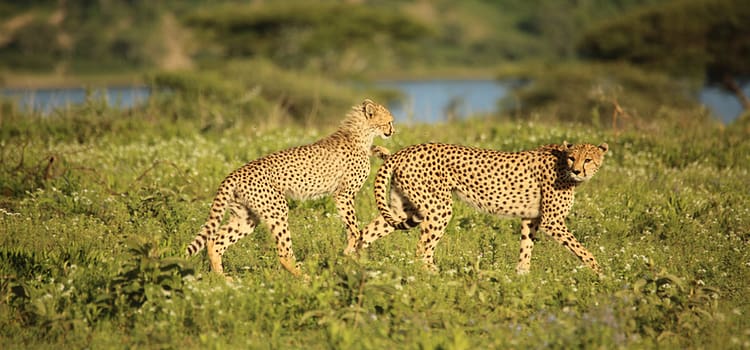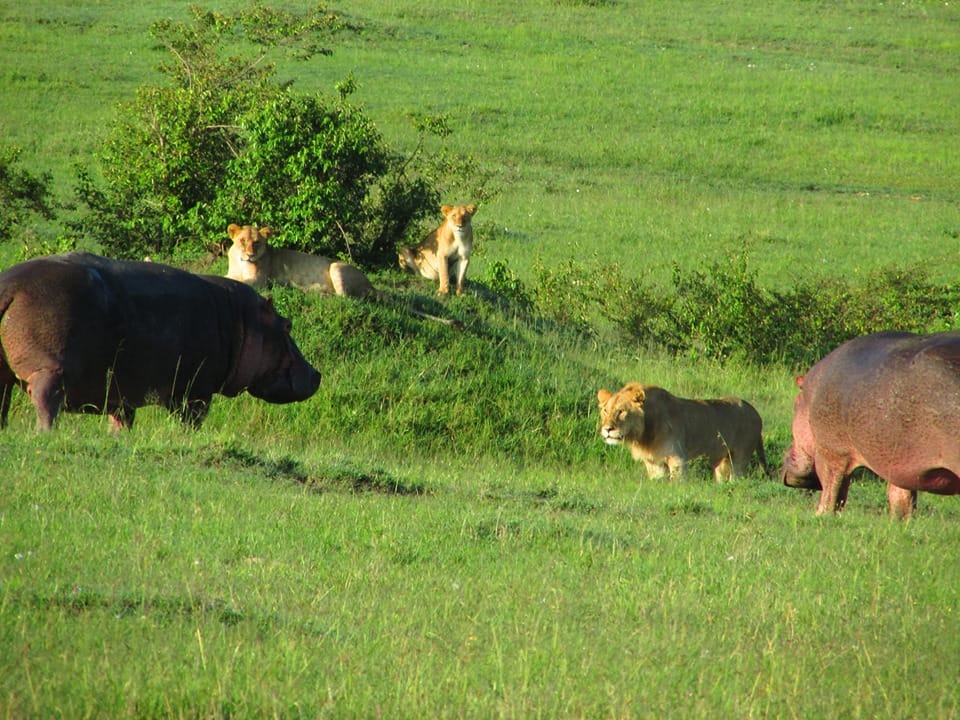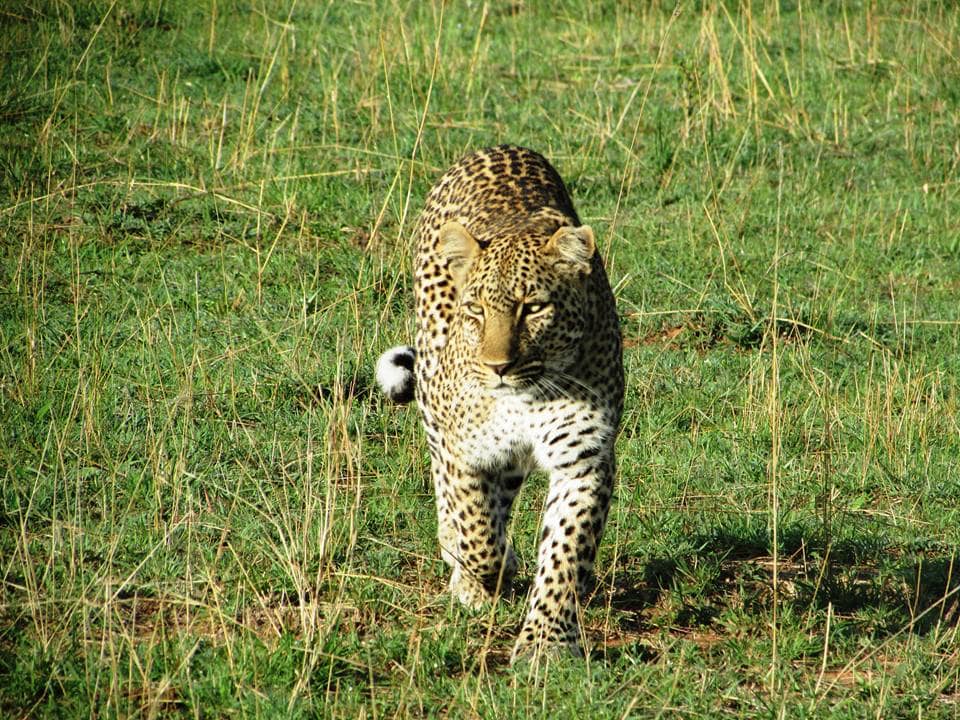Why is the Low Season the best time for a Kenya and Tanzania Safari?
Often, travelers who are planning a safari to Kenya and Tanzania find themselves wondering whether it would be worth it visiting during the low and green season months of April, May and November.
As professional safari experts for Kenya, Tanzania and Uganda, we give you advantages of booking a low season safari in order to help you to make an informed decision.
Talk of Lowest prices on accommodation and international & local flights, less crowded parks and lodges, and that rare opportunity to see the normally dry African Savannah turning ALL GREEN and teeming with life ..
These are just but some of the reasons why the low season months are the best for a Kenya and Tanzania safari.
Did you know that most special interest tourists like Professional Photographers,
Ornithologists, Wildlife Photographers and Researchers prefer the period between April and June for their visit to Kenya and Tanzania national parks and reserves?
The period between July and October is normally the busiest for Kenyan safaris.
This is not only because it coincides with the Summer when most people go on holiday, but also because of the rare wildlife spectacle of millions of wildebeest making that annual pilgrimage between the Serengeti and Masai Mara National Reserve. The same applies to Tanzania, which unlike Kenya is also very busy in January and March due to the wildebeest calving season in Ndutu, south of the Serengeti.
However, there is a rising number of both seasoned and first-time tourists who have discovered the secret in travelling during the green season. Kenya and Tanzania experience the long rains in April and May but this never degrades the ultimate safari experiences that East Africa is famous for in any way.
If anything, it only adds to the adventure and thrill of an Africa safari.
Contrary to common belief that most roads are impassable, driving is quite manageable especially if you are using a 4 x 4 WD safari land cruiser- the ultimate off-road beast. Those who do not prefer to drive can fly to most parks using Safari Link, Air Kenya, Governors Aviation or higher private charters in Kenya, while Regional Air, Air Excel, Coastal Aviation and Auric air are the leading safari airlines in Tanzania.
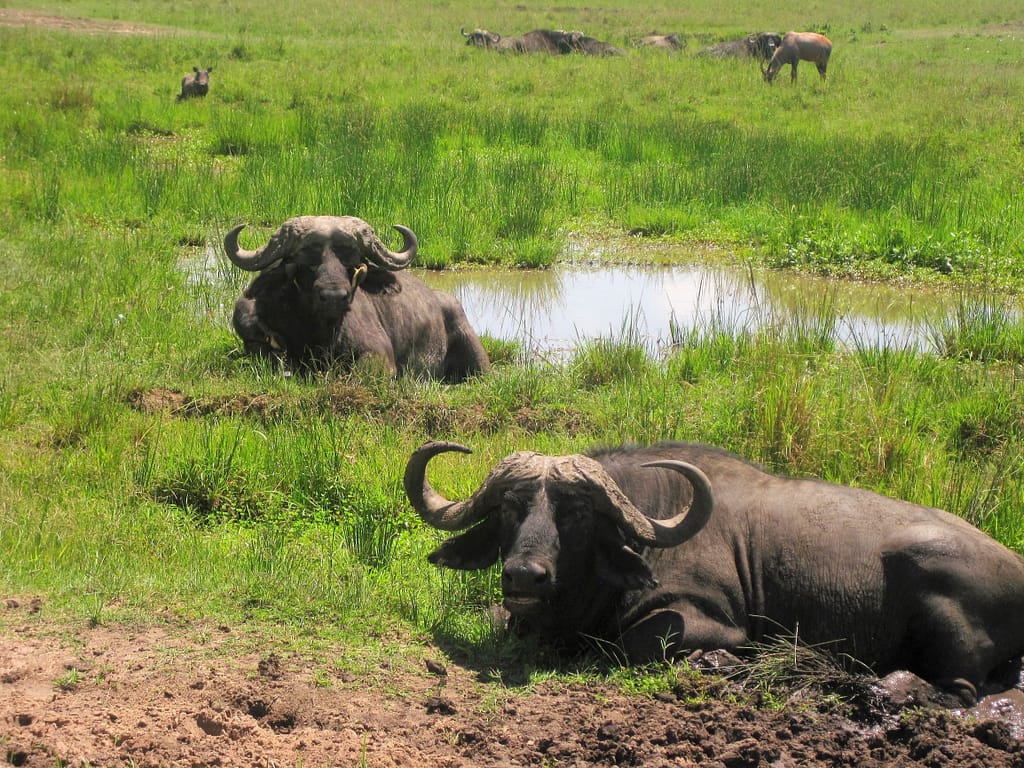
CHEAPER ACCOMODATION RATES:
While travelling during the low or green seasons, you benefit from highly discounted rates for your accommodation. This means that you can stay at some of Kenya and Tanzania’s popular safari camps and lodges at less than 50% of what you pay between July and October. You therefore save money, or have a higher budget to spend more nights on safari. Due to fewer tourists, this is also the time when you get highly personalized services and attention from the lodge staff. This must be one reason why most elderly tourists just love to be in East Africa during this season as they get that per minute attention that they rarely get back home or at any other destination.
UP CLOSE AND PERSONAL MOMENTS WITH AFRICAN WILDLIFE:
One of the most important aspects of an African safari is that authentic, wildlife safari experience, and it never gets eroded during this season, if anything, it gets even better.
Among the main reasons for wildlife movement is search for food, whether it is prey or greener pastures for grazing. After the dry spell that drives animals for miles in search of food, April brings the rains that replenish the vegetation, leading to less movements of herbivores as they have enough to feed on. The search for vegetation cover and privacy from human interference are other reasons that lead to wildlife movement. However, with the growth of vegetation, especially the tall grass and with only a few tourist vehicles in the parks, animals tend to stay very close to main park areas without much movement. This means that depending on the location of your lodge, you don’t have to drive for hours looking for wildlife during your game drives.
GREAT WILDLIFE PHOTOGRAPHY:
With less tourists in the parks, you get more time with the animals because most of the time, they will not move unless they are disturbed. A sleeping Lion, Cheetahs relaxing under a tree or a Leopard resting on a branch of an Acacia tree will remain calm and peaceful in the presence of only a few tourists, most likely your safari vehicle and one or two more being the only ones around a sighting during the low season. This offers you a great chance to take more photos from different angles, and to also shoot some wildlife videos.
It is not surprising to find a pride of lions, a Cheetah with cubs or a herd of buffaloes lying or feeding unperturbed, off a game driving track just a few meters to your lodge or camp.
Picture this, that moment during an afternoon game drive when your safari driver guide, after a long moment of silent search suddenly leads you up to a whole pride of Lions, probably 3 males, 6 females and over 8 playful cubs, both juvenile and infants, all lying by the roadside. As if that is not enough, the cubs amused by the arrival of a single safari vehicle will try to inspect it by scent and even walking across it from below, going around it for over 10 minutes before returning to their mothers and taking a pose for yet another photo? These are the imaginary moments that are more likely to come true during the low season when there is less human interference to the wildlife. Rare, pristine wilderness moments have happened in the past during this season, and it will be going down again this year, and in the years to come.
BEAUTIFUL LANDSCAPE:
Imagine that afternoon in mid-April when the sky darkens as towering thunder clouds brew up a storm that shuts out the sunlight and transforms the landscape into a brooding sweep of ink grey. A herd of Buffalos, 200 plus strong, march towards a sculpted Balanite tree – the desert date that looks like an Acacia with its flat-topped crown neatly trimmed below by Elephants and Giraffes.
The bright contrast between the light, dark grey clouds and the green vegetation offer you that perfect opportunity to capture awe inspiring sunrise or sunset images during the low season. Often, there will be some showers in the evening, followed by some sun and the rainbow making an appearance. If you are a photographer, we know you are already imagining the magical shots that you would be lucky to take if you were presented with such a scenario? That’s safari for you during the low season!
NEW BORNS AND THE CALVING SEASON:
The short grass plains of Ndutu in Tanzania’s Ngorongoro Conservation area and extending all the way to southern Serengeti are a bee hive of action between February and March. This is the time when the migrating wildebeests give birth en masse in what is known as the calving season. Wildebeest’s time their giving birth to coincide with long rains season which begins in end of March. This ensures that the newly born calves will find some soft and juicy sprouting grass to feed on. During a three-week window between late January and February, up to 8,000 calves will be born daily, with about 500,000 young ones being born by the time the synchronized birthing is over.
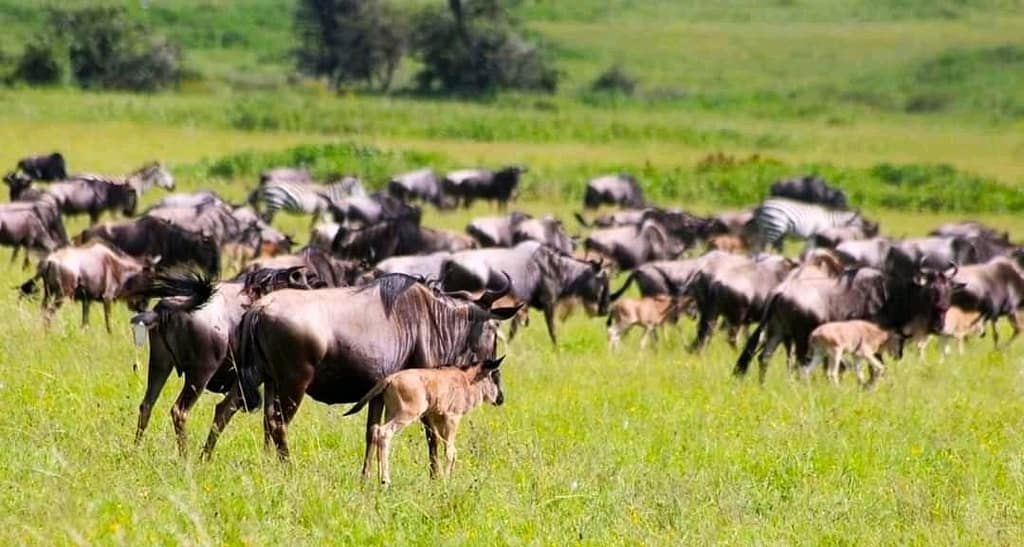
It has been observed that during the same period, Lions, Cheetahs, Hyenas, Serval Cats, Jackals and other predators also give birth. With so many Gnus being born at the same time, predators have an easy time providing milk and meals for their young ones since there is plenty of easy wildebeest kills. During this season, Elephants, Topis, Buffalos and other animals have also been spotted nursing their new borns.
The low season therefore offers you a great opportunity to see a lot of young predators and prey as they get introduced into the savage African wilderness. This is possible not just in Serengeti, but also in the Masai Mara, which is a northern extension of the former.
In Africa, rains are a blessing and not a curse and you probably don’t need much more evidence than what we have offered in this blog on why the low season is a great time for safari.
With our very affordable packages on offer, you now have every reason to visit Kenya and Tanzania in the months of April, May and November.
When it comes to delivering the ultimate African safari experience, you can then leave that to us and our team of highly experienced safari guides.
Feel free to contact us on: holidays@esseniasafaris.co.ke // +254 723 77 57 49 (whats app) for an expertly crafted safari package that suits your taste, budget and pace.

